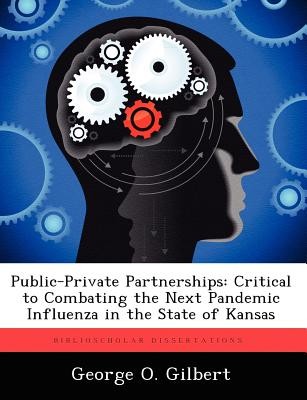
- We will send in 10–14 business days.
- Author: George O Gilbert
- Publisher: BiblioScholar
- ISBN-10: 1249285151
- ISBN-13: 9781249285151
- Format: 18.9 x 24.6 x 0.6 cm, softcover
- Language: English
- SAVE -10% with code: EXTRA
Reviews
Description
The Pandemic Influenza outbreak that occurred in 1918 killed over 50 million people world-wide and was responsible for more deaths than our first two world wars combined. Unlike most threats to our national security, Pandemic Influenza does not have a political or ideological motive, does not distinguish between social or economic class, nor does it require special environmental conditions to attack. According to experts across the country and throughout the world, it is only a matter of time before the next Pandemic strikes. Over 85 percent of our nation's entire critical infrastructure belongs to the private sector. As equal stakeholders in the fight against the next Pandemic, it seems obvious that our Federal, State and local governments should solicit more support from the private sector to plan, mitigate, and respond to Pandemic Influenza. This study addresses how the Federal, State (Kansas) and local governments can better solicit the support of private sector industries in support of Pandemic Influenza. This thesis will delve into the Federal, State and local plans and policies to expose capability gaps that could be filled by private sector industries. This study will address what types of industries could be enlisted to provide desperately needed resources in the event of an outbreak. Finally, this research will look at the types of incentives or instruments of power the Federal, State and local governments could utilize to better facilitate public-private partnerships.
EXTRA 10 % discount with code: EXTRA
The promotion ends in 18d.10:40:48
The discount code is valid when purchasing from 10 €. Discounts do not stack.
- Author: George O Gilbert
- Publisher: BiblioScholar
- ISBN-10: 1249285151
- ISBN-13: 9781249285151
- Format: 18.9 x 24.6 x 0.6 cm, softcover
- Language: English English
The Pandemic Influenza outbreak that occurred in 1918 killed over 50 million people world-wide and was responsible for more deaths than our first two world wars combined. Unlike most threats to our national security, Pandemic Influenza does not have a political or ideological motive, does not distinguish between social or economic class, nor does it require special environmental conditions to attack. According to experts across the country and throughout the world, it is only a matter of time before the next Pandemic strikes. Over 85 percent of our nation's entire critical infrastructure belongs to the private sector. As equal stakeholders in the fight against the next Pandemic, it seems obvious that our Federal, State and local governments should solicit more support from the private sector to plan, mitigate, and respond to Pandemic Influenza. This study addresses how the Federal, State (Kansas) and local governments can better solicit the support of private sector industries in support of Pandemic Influenza. This thesis will delve into the Federal, State and local plans and policies to expose capability gaps that could be filled by private sector industries. This study will address what types of industries could be enlisted to provide desperately needed resources in the event of an outbreak. Finally, this research will look at the types of incentives or instruments of power the Federal, State and local governments could utilize to better facilitate public-private partnerships.


Reviews